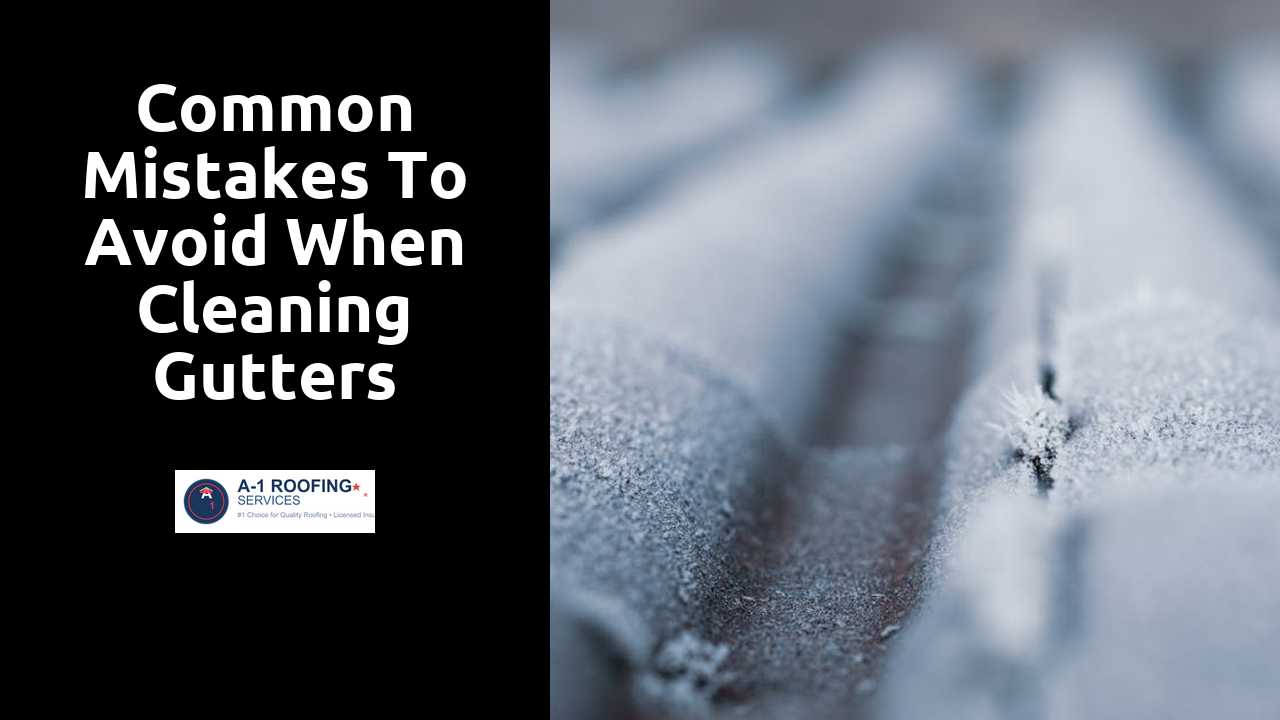
Common Mistakes to Avoid When Cleaning Gutters
Table Of Contents
Neglecting to Inspect for Damage
Many homeowners overlook the importance of inspecting gutters for damage during routine cleaning. Ignoring this step can lead to serious issues down the line. Dents, rust, or cracks may not seem significant at first, but they can compromise the entire system. Small leaks can escalate into major problems, causing water to seep into the foundation and leading to costly repairs.
Regular inspection allows homeowners to spot these issues early. Signs of water damage around windows, doors, or the foundation often indicate that gutters are not functioning properly. It is essential to not only clean the gutters but also assess their overall condition. Keeping an eye out for loose hangers or sagging sections can save you from bigger headaches in the future.
More tips and tricks can be found here.
Signs Your Gutters Need Repairs
Frequent water overflow during rainstorms is a clear indicator that gutters may be damaged or clogged. When water spills over the edges instead of flowing through the downspouts, it can lead to issues such as foundation erosion or landscape damage. Additionally, rust, cracks, or peeling paint along the gutter itself can signal potential problems requiring immediate attention.
Another noteworthy sign is the presence of peeling paint or mildew on the exterior of your home, particularly below the gutters. This often indicates that water is not being properly directed away from the structure. Moreover, sagging or detached sections of gutter can suggest that they are either overloaded with debris or experiencing wear and tear. Regular monitoring of gutter condition helps prevent more severe structural damage down the line.
Not Wearing Protective Gear
Cleaning gutters is a task that presents various hazards, making protective gear essential for safety. Falling from heights is a significant risk associated with this chore. Wearing a sturdy helmet can prevent head injuries in case of an accident. Non-slip footwear is equally important since wet or loose debris can lead to slips and falls.
In addition to tangible physical risks, exposure to harmful materials is another concern. Gutters can accumulate mold, bacteria, and sharp objects, all of which pose health threats. Gloves made of durable material can safeguard against cuts and protect skin from irritation. Safety goggles help shield the eyes from flying debris and chemical exposure, ensuring a safer cleaning experience.
Essential Safety Equipment
When cleaning gutters, it is crucial to prioritize safety by wearing appropriate protective gear. A sturdy pair of gloves will shield hands from sharp debris and potential cuts. Safety glasses should also be worn to protect the eyes from falling dirt or small particles. A hard hat is advisable if there's a risk of overhead hazards, especially when working near trees. Durable footwear with non-slip soles can provide better traction on slippery surfaces, reducing the risk of falls.
Using a stable ladder is essential when accessing gutters located high up. Ensure the ladder is placed on level ground, and consider using a ladder stabilizer for extra support. Climbing with a partner can enhance safety; having someone nearby means assistance is readily available should an accident occur. Additionally, avoid overreaching while on the ladder. Instead, descend and reposition it as needed for better access to different sections of the gutter.
Improperly Disposing of Debris
During gutter cleaning, it's important to handle debris appropriately. Many homeowners simply dump loose leaves and muck onto their lawns or sidewalks. This method not only creates an eyesore but can also damage your landscaping or create a slipping hazard for family members and guests.
Instead of casual disposal, consider more environmentally friendly options. Composting organic materials like leaves can benefit your garden. For larger debris, such as twigs and dirt, bagging them for yard waste pickup is a better alternative that aligns with local waste management guidelines. These practices ensure that your cleaning effort contributes positively to your home's exterior and the environment.
Best Practices for Debris Disposal
Proper disposal of debris collected from gutters is crucial for maintaining both environmental health and local ordinances. A practical approach involves using a sturdy trash bag or container to collect leaves, twigs, and other organic materials. These items can often be composted if free from chemicals and pesticides, providing a sustainable way to reduce waste. For non-organic materials, such as roof shingles or broken pieces of gutter, it’s essential to check local regulations for disposal options. Many communities have designated drop-off sites for such debris.
Another effective method is to utilize a green waste service if available in your area. This allows homeowners to place organic materials in a designated bin for collection, encouraging recycling and proper management of yard waste. Avoid rinsing debris down storm drains as this can lead to clogs and pollution in water systems. By following these practices, you can maintain cleaner gutters while contributing positively to the surrounding environment.
Related Links
Seasonal Gutter Cleaning: Preparing for WinterThe Importance of Gutter Cleaning for Roof Longevity